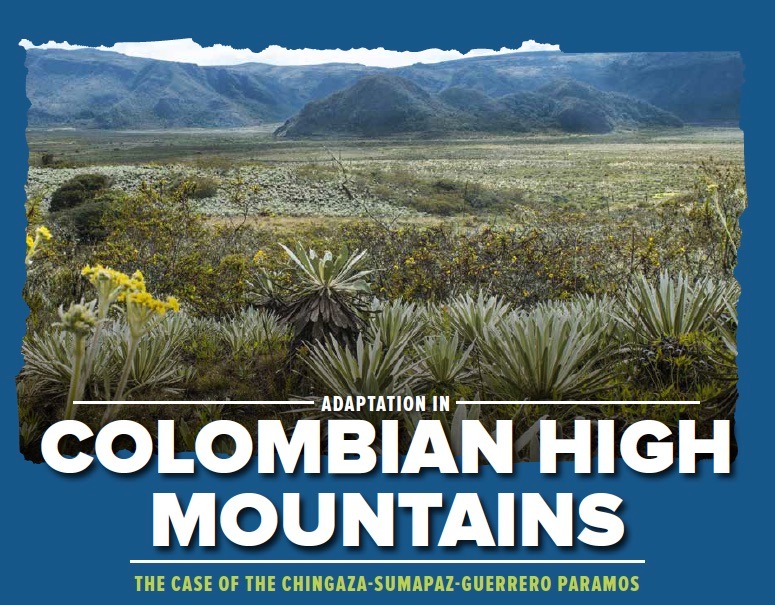
Adaptation in colombian high mountains
The case of the Chingaza-Sumapaz-Guerrero paramos
| Autores: | Intenacional, Conservación Internacional Menjura, Tatiana Borrero, Natalia |
| Colaboradores: | Menjura, Tatiana (Coordinador Editorial) Borrero, Natalia (Coordinador Editorial) Silva, Juana (Traductor) |
Materia:500 - Ciencias naturales y Matemáticas
Clasificación Thema::RP - Planificación regional y zonal
Público objetivo:Profesional / académico
Disponibilidad:Disponible
Estatus en catálogo:Próxima aparición
Publicado:2019-12-20
Número de edición:1
Tamaño:6,7Mb
Soporte:Digital
Formato:Pdf (.pdf)
Idioma:Inglés
Libros relacionados
Estrategia educativa de reconciliación y paz para jóvenes, adultos y personas mayores - Matemáticas Ciclo 5 - Neira Grisales, Zulma Rocío; Gamba Herrera, Diego Armando
Estrategia educativa de reconciliación y paz para jóvenes, adultos y personas mayores - Matemáticas Ciclo 4 - Neira Grisales, Zulma Rocío; Gamba Herrera, Diego Armando
Estrategia educativa de reconciliación y paz para jóvenes, adultos y personas mayores - Matemáticas Ciclo 3 - Neira Grisales, Zulma Rocío; Gamba Herrera, Diego Armando
Estrategia educativa de reconciliación y paz para jóvenes, adultos y personas mayores - Matemáticas Ciclo 2 - Neira Grisales, Zulma Rocío; Gamba Herrera, Diego Armando
Reseña
The Colombian capital, Bogotá, as well as its 21 surrounding municipalities, benefit from water and other services provided by the high Andean ecosystems of the Chingaza-Sumapaz-Guerrero strategic conservation area. This includes: 2 departments, 22 municipalities, more than 550 thousand hectares, 6 environmental authorities and more than 10 million people. In other words, these area is responsible for the current and future socio-economic development not only of the capital, but also of the entire region. However, climate change threatens natural resources, particularly water availability.
In this context, the Ministry of Environment and Sustainable Development, together with Conservation International, have been implementing since 2015 the project Adaptation to Climate Impacts on the Water supply and regulation in the Chingaza-Sumapaz-Guerrero Area. The project is financed by the Global Environmental Facility (GEF) and has received the support of the Presidential Agency for International Cooperation of Colombia (APC) and the Inter-American Development Bank (IDB). Key project partners in strengthening the capacity to supply and regulate water flows of four priority basins in the Area are: the Institute of Hydrology, Meteorology and Environmental Studies (IDEAM), the Bogota Water Utility, the Regional Autonomous Environmental Corporation of Cundinamarca (CAR) and the Regional Autonomous Environmental Corporation of Guavio (CORPOGUAVIO).




